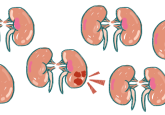FDA approves first blood test to aid Alzheimer’s diagnosis

A recently cleared blood test offers a quicker, less invasive route to Alzheimer’s detection, expanding diagnostic access and easing the burden on patients and health systems.
The US Food and Drug Administration (FDA; MD, USA) has approved the first blood test designed to aid in diagnosing Alzheimer’s disease. Cleared on May 16 2025, the Lumipulse G pTau217/β-Amyloid 1-42 Plasma Ratio offers clinicians a faster, less invasive alternative to traditional diagnostic methods by detecting amyloid plaque accumulation in the brain—one of the hallmarks of Alzheimer’s.
According to the World Health Organization (Geneva, Switzerland), there were over 55 million people living with dementia in 2020, with this number expected to double every 20 years. Alzheimer’s is the most common form of dementia and contributes to approximately 60–70% of these cases. As the seventh leading cause of death and a primary driver of physical and cognitive decline in the elderly, there is a growing need for accessible, accurate dementia diagnostic strategies that enable earlier intervention and improve patient outcomes.
You may also be interested in:
- Validating a fully automated blood test for Alzheimer’s disease
- eBook: World Alzheimer’s Month 2023
- Launch of the Lumipulse G GFAP assay: a new tool for neurological research
Until now, Alzheimer’s diagnosis has relied heavily on costly PET scans or invasive spinal taps to detect amyloid plaque accumulation in the brain. The Lumipulse test offers a simpler and less-invasive alternative. Using Fujirebio Diagnostics’ (PA, USA) fully automated Lumipulse G1200 instrument system based on chemiluminescent enzyme immunoassay (CLEIA) technology, the test works by measuring two proteins in blood plasma—pTau217 and β-Amyloid 1-42—and calculating their ratio, which correlates strongly with the presence of plaques.
Cleared through the FDA’s 510(k) pathway after receiving Breakthrough Device designation for its potential to transform Alzheimer’s diagnosis, the Lumipulse test has demonstrated impressive accuracy during clinical trials. In a study of 499 cognitively impaired patients, over 91% of those with positive test results showed amyloid plaque presence on PET scans or cerebrospinal fluid analysis.
While the test is not intended as a standalone diagnostic tool, its approval could promise accelerated diagnosis and enable earlier interventions by reducing dependence on expensive and invasive alternatives, as well as expand access to emerging treatments like lecanemab and donanemab.






